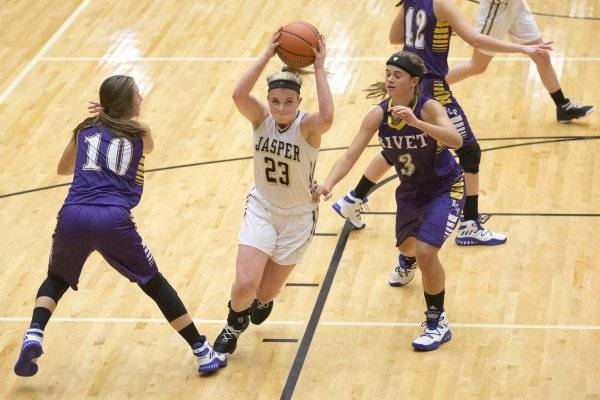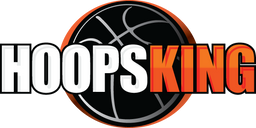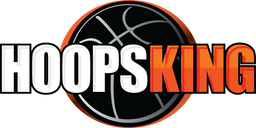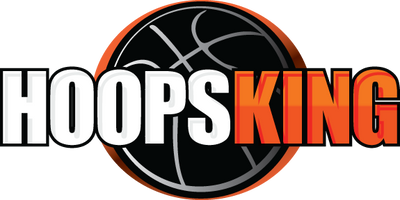
Dwane Casey and The Fundamentals of Man to Man Defense:
In 2011 Dwane Casey joined the Toronto Raptors, who were at the time 30th overall defense in the NBA. So, the obvious thing for him to do was to try and develop a good and aggressive man to man defense that will be good enough to make them a relevant playoff team.
Every good team has to build its foundations based on defense just because there will be nights where the hands will be cold, the ball will be slippery and rim will be a bit higher than usual. We all know that offense can get cold from time to time so the only thing that we can always rely on is the defense.
This way of thinking is crucial if you want to build a good basketball program regardless of the level, gender or age.
The things that coach Casey did in just one year working with the Raptors resulted in getting the team into top 10 defenses in the whole league. That commitment towards the defense transformed the franchise in one of the best teams in the whole NBA. Coach Casey thinks that no matter what team sport you are coaching, not just basketball, the first thing that you need to take care of is Defense.
Table of Content:
Dwane Casey and The Fundamentals of Man to Man Defense:
- Bonding with the Team
- The Stance
- The Positioning
- How to Defend a Player on the Drive
- Protect the paint
- Communication and Positioning
- Defend the Strong Corner
- The Discipline
- How to help on a Middle Dribble Penetration
- How to help on a Baseline Dribble Penetration
- Tag a Cutter
- Dwane Caseys 7 Fundamental Rules
Dejan Radonjić and the Aggressive Man to Man Defense
1. Bonding with the Team

The first thing that you need to do is to manage your approach toward your players. Players will not respond to things that you know unless they see that you care, and this does not just concern basketball court. If you want to unleash 100% of their capabilities you must give them 100% of yourself. Ask them how they feel, what they want, how are their parents...ask them just about anything.
As their teacher, as their coach, you need to show them that you are looking at them as the whole human being and that you accept them for what they truly are. Only then, only in the moments when they start to look at you as you are their friend, only then they are going to give you 100% of them. We all know that the players may have offensive limitations, and we all know that they can have almost no defensive restrictions but the ones that mother nature gave them.
If you create the bond that is going to unleash and push your players to their limits, you are going to make a first step towards building a successful team defense. This is where coaching starts...by knowing your boys and girls.
2. The Stance

Everything starts with getting your 5 players into a defensive stance. Most offensive breakthrus, even on the highest levels are maybe because the players are not in a stance. There is not a universe in which you are going to be able to stop a dribble penetration with your knees being straight. The time needed for you to get low is more than enough for the offense to get by you without making some extra effort
.
Being in the stance is a matter of habit. To accept a habit and make it a thing that is natural you need a period of 21 days. So, if you are doing things right, and if you are working with none professional teams, in a worst-case scenario, two months is all you need to teach your players to be in a stance all the time.
Coach Casey is always asking his players: "How many boxers are fighting with their hands down?" And the answer: "Only the ones that are on the floor"
Nobody is saying that they need to in a low, low, on ball low stance, but in an athletic stance with knees bent a bit, legs slightly wider than the shoulders, ready to "fight".
3. The Positioning

So many times we can see that the players just position themselves badly regardless where the ball and the other players are, both on the offensive and the defensive end of the floor.
If you get too close on defense, there is no time to react because the player is going to fly by you, and if you are too far there is an open shot opportunity. The correct distance between the offense and the defense, if we are talking about guarding the ball, is on an arm's length distance.
The main goal is to contain the ball. Do not teach your players to reach. Statistics say that 9 times out of 10 they are going to miss and the offense is going to take advantage over them.
4.How to Defend a Player on the Drive


If the offense is dribbling with his left hand, there are two things that you need to do:
a) keep contact with your left hand with the defense by bumping him a bit. You must not extend your arm, but you can amortize the contact
b) swing your right hand up and down to both confuse the offense and to try to deflect a pass
c) keep distance at all times
d) if he picks up the ball, get close to him and put your arms up
You can train this by dividing the team into pairs, one on offense one on defense, make them follow everything that we just mentioned. When you blow your whistle, the offense needs to stop, the defense needs to get close.
5. Protect the Paint

The further the shot is taken from the basket, the better the chances are that the player will miss the jumper. The first thing that you need to do building your defense is to learn how to protect the paint. In this case, your goal is to try and not to overextend and to chase the ball. You want to contain the ball and you want your player guarding the ball to be on the three-point line, to touch the arc with heals, and you want everybody else to be inside the 3pt shot area.
6. Communication and Positioning

The player guarding the ball needs to shout: "BALLLL" every time because the other players can concentrate only on positioning. If the ball is on the 45-degree spot, first help defender needs to be on the free throw shot line, on its half.

The last player on defense, on the weak side, should be inside the paint with one foot, one step beneath the level of the offensive player in the corner. If the last player is in level or slightly forward regarding the corner shooter, there is a vast chance of a back cut.
7. Defend the Strong Corner

Coach Casey does not like to help on a drive penetration from the strong side corner. Why? In the NBA, corner three is the most emphasized shot these days and the players are hitting it with high percentages.
So how do you defend this? The player on the lane is taking few fake steps like he is going to defend the penetration, but instead, he is going to close out the corner three, and the player on weak side corned is coming to help.
As far as the coverage when the ball is passed, we do not want our players to move by sliding in the stance. We want them to sprint to their position, make a stop and then get in a stance. If the ball goes back, halfway defender has to sprint, and the other half he needs to go small steps while getting lower in a defensive posture. If your player goes high all the way, then he is an easy target for the offense to get by him easily.
Closeouts in any league is the place where the problems start.
The Covering
The Closeout
8. The Discipline

Discipline starts with your gear. There is no shirt pulled out, there no loose ties. How you look is how you play. If you are going to be undisciplined on your gear it is going to become a habit and it will reflect on your stance, on closeouts, pretty much on everything. Discipline is one of the most important things on defense. If there is an error then there is a penalty but for everybody. Everybody needs to be accountable and everybody has a job to do.
9. How to help on a Middle Dribble Penetration
If there is a dribble penetration toward the middle, the guy that is standing on the free throw line is the one that needs to stop the ball. The thing that he needs to do is to stand his ground a bit and to fake as he is going on closeout but he's not. When he sees the air between the ball and the fingers, he needs to run and to close out on the player that he originally guards. The closeout starts when the pass starts and not when the targeted player receives the ball.
10. How to help on a Baseline Dribble Penetration
These are the corner three situations that are explained earlier in the article. The principle is the same, with the exception of how the player from the weak side corner is changing his position.
11. Tag the Cutter
If the ball goes on a low post, for sure there will be cutters flying inside the paint. We do not want to let cutters run through our paint area freely. If you see the cutter, players that are closest to his line of entry need to take an extra step towards him and to touch him. This way you are going to tell the offense that you are aware of everything that is happening inside the restricted area.
12. Dwane Caseys 7 Fundamental Rules:
1. Stance - be ready for a fight
2. No Fear of Contact - you have to fight
3. Communicate - talk, show a hand, look, clap your hands... communicate in a verbal and a non-verbal way
4. Anticipate - try to read the game and to position yourself the way possible
5. Attention to Detail - small things are making a difference
6. Have an Act - you need to be an actor if you want to "sell" some moves
7. Finish the Play - do everything till the very end, don't steal a few steps on a suicides, jump an extra inch on a layup... always give your 100% because how you train is how you play.
Dejan Radonjić and the Aggressive Man to Man Defense:
People that have a thing for European basketball know that all of the Dejan Radonjic teams have one thing in common: they all are underdogs, they all lack in talent and they all play defense like it is the last thing that they'll ever do. All of Dejans teams are playing solid, aggressive, team man to man defense. This way, that deficit in the offense is reimbursed in defense.
There are times in every game when he might hit some breaks because of the scouting reports or tactical decisions, but generally, his teams play high-intensity basketball.
As he says, his in-game philosophy was developed because he was pushed into high-level coaching directly from playing major league and he had no previous coaching experience, and he kind of replicated the situation from the times he started to play senior basketball. Dejan said that he was aware that he didn't know much about tactics and how to run a team from the coaching standpoint, so the only thing that he could do is to make his team physically superior and to play hard defense.
The philosophy behind the aggressive defensive mentality is to have initiative: "Attack the opponent before he attacks you".
1.Player Selection

The first thing that you want to do if you want to play aggressive man to man defense style of basketball is the selection of players. They need to be good athletes, but more important, they have to be fighters in their minds. Their character has to be tough, they need to be persistent, and they need to be hard workers.
2.The Balance

Even if you want to play 40 minutes suicides like defense, you need to have at least two players who are superior in play-making to decompress the team, to calm the offense and to set some plays for everybody. If you do not have this kind of players on your team then you need to control your team with offensive sets, a lot of them, and you need to call them during the game. If your players are not able to read the opponents, then you have to do that for them and you need to have a play to do it. For example, the team has a slow center, but your team does not recognize that then you need to call a pick and roll action where that center will have to switch and your guard is going to be able to outrun him.
3.Psychology

For this kind of demands off of your team, you have to talk with your players all the time. Analysis, corrections, motivation, small talk, getting your players fired up, a strong sense of community, all these things are a bit different if you want to have high-intensity defense team. You can know who is a competitor right away...from their posture, footwork, hands, the look, concentration, you can tell immediately who is a player with strong character.
4.The Key-Point

Pressure on the ball is everything. Everything starts with the pressure on the dribbling and on the first pass, and with those two things your team tends to disrupt the game plan of the opponents. Regarding the style of play that you want to cherish, this is the way that you need to train. The main mentality that you want to develop for an aggressive man to man defense is to attack the player while playing defense. All the time, you want to "fly like a butterfly and sting like a be
5.One on One Defense
It all starts with the One on One drill, at first slow and controlled, and as the time pass, you need to increase the intensity.
As far as the beginning of the training goes, at first you want your defensive player to be in the defensive stance, to keep the contact at all times and Not To Use Hands. We simply want our players to play defense with their body from one baseline to another. The goal of the drill is to try and to prevent the player to go straight but from side to side. Defensive player needs to try and do direct the offensive player.
6.Activate the Hands
Both coaches, Casey and Radonjic, insist on the contact with the closer hand, which is used to bump a bit the offense, and the left hand which is used to attack the ball and to prevent the pass. At first, tell your players to focus on using the "bump" hand, and then include the other one. First, do this drill at a slow pace and keep an eye on that bumping. If the contact is too strong the refs will call a foul. This move is used to slow don't an offensive player but it takes a lot of practice not to be called a foul.
7.Make a stop at the Lines
The goal of the drill is to increase the pressure at the sideline and to force the offense to stop with the dribbling, take the ball and look for the pass. Generally speaking, if there is a defensive stop before the middle court line, the offense is in trouble because of the time (8 or 10 seconds rule), and that first pass is most of the times a big problem and the opportunity for a turnover. The pressure on the pass must be very aggressive to the measure that the offense has to think to make a defensive move, both while dribbling the ball or wanting to make a pass.
Lines are the best places to make stops because of the limitations that they present.
8.Defense on the Point

Defining the defensive goals is a very important part of building a successful aggressive man to man defense.
If the offensive player is left-handed, we know that he's dominant foot is left and that every advantage that he is going to try and make is going to be added with his left leg. So, the defensive goal is to attack that left leg! The defender needs to get into position to deny the free movement of that left leg while he is thinking about the defensive plan...either if it's defending the paint or a shot.
How can we do this? Let's take a look at this picture.
Our defender wants to put his right leg close to the left leg of the offensive player and to try and make him do a defensive pivot or a defensive dribble. This is not an easy task, and there will be mistakes at first. As the physical conditioning of your players goes up, their mentality will get stronger so the improvement is imminent.
9.Defense on the side
Coach Radonjic is never giving up the middle. Everything else is an option which can be defended by covering and switches. Yes, there is an option of a direct step toward the basket but if the defender is close, this is not that possible. The goal is that the offense takes his first dribble towards the corner or to take a defensive dribble or pivot.
10.Defense on the Half Court
When defending the ball this far, the first thing that should be in players minds is that the offense can't shoot. So, the constellation is different now. So, the mentality, in this case, needs to be looked at like the defense has an advantage. Coverage in these situations are a bit different and with the good preparation are not a problem.
The main thing defending the ball out far is that you do not try to steal the ball but to contain it and to do this successfully, the defender must not try to "work" with his inside hand. It seems that is a good option but if there is a miss then your team will defend 5 on 4 situations.
If there is a good offensive player dribbling the ball, and he manages to gain some kind of advantage, in backpedaling and trying to reconnect on defense, aggression is a thing of urgency because we want to let opponents know that the defense is going to come and that there will be no easy dribbling, pass or a shot. The enemy has to know that the guns will be firing all the times.
11. 3 on 3 defense on the half court
Start this drill without the lob pass and without the dribbling. For the development of the aggressive man to man defense, point out to your players to try and to deny the pass, or if they can't deny it then to try to chase off the offense as far from the arc as they can, and ultimately to make them receive the ball in a position where the offense will be looking towards the back-court.
Pressure on the ball is a must because if there are some errors, and some of the offensive players are open for a cut, that aggressive mentality and pressure on the ball may be enough to prevent that pass.
In this part of the training, playing with fouls is a must, just to develop that extreme aggression and desire to be close to the offensive player. In time, as the games are getting near, working on small details gets all the attention while the aggressive approach is a thing of habit.
12. The Goals of an Aggressive Man to Man Defense
1. Slow down the offense on their half and make them use all of the 8 seconds
2. Make them take two or three extra dribbles just to consolidate right after they have managed to bring the ball over the center and take another 3 or 4 seconds.
3. Slow down the development of the first movement and the first pass. (6 seconds).
If these three goals are fulfilled, the offense already trifled away 16 - 18 seconds, and they have 8 seconds maximum to take a shot, which is a success.
If you want to learn more about the development of an aggressive man to man defense, rent a DVD by clicking on the link below:







